Leather is a durable, versatile material that can be found in a variety of items, from clothing to furniture. It’s also available in a wide range of colors, and many people are interested in using RIT dye to change the color of their leather items. But does RIT dye work on leather? In this article, we’ll discuss what you need to know about using RIT dye on leather, including what type of leather can be dyed with RIT and how to do so safely.
Does Rit dye work on leather?
Yes, RIT dye can be used on leather and suede. However, it is important to keep in mind that not all leather is the same—some types are more suitable for dyeing than others. Therefore, you should always check with the manufacturer of your item before attempting to dye it.
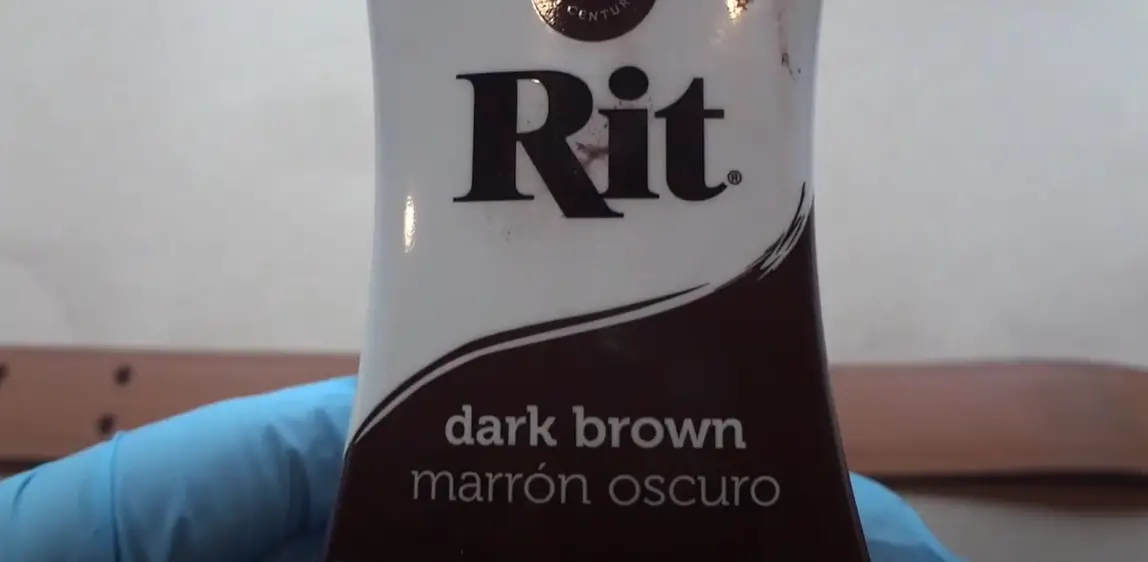
When using RIT dye on leather or suede, it is important to always do a patch test first. This will allow you to make sure that the dye does not ruin your item before you start the full process. To do this, simply apply a small amount of RIT dye on an inconspicuous area of leather or suede and leave it for 24 hours.
It is also important to use the right type of RIT dye when dyeing leather or suede. The best option is liquid RIT dye since it penetrates into the fibers of the material more easily than powder or gel versions.[1]
Type of leather suitable for Rit dye
The type of leather that is suitable for Rit dye depends on the chemical composition of the leather. Generally, vegetable-tanned and chrome-tanned leather can be safely dyed with Rit dyes. These types of leather offer more stability when exposed to the chemical reaction process of dyeing.
However, modified or chemically altered leather may not work well with this type of dye.
It is important to distinguish between leather and faux leather when considering using Rit dyes. Faux leather, also known as pleather or leatherette, is made from synthetic materials and cannot be dyed with any type of fabric-based dye.[1]
How to dye leather with Rit dye
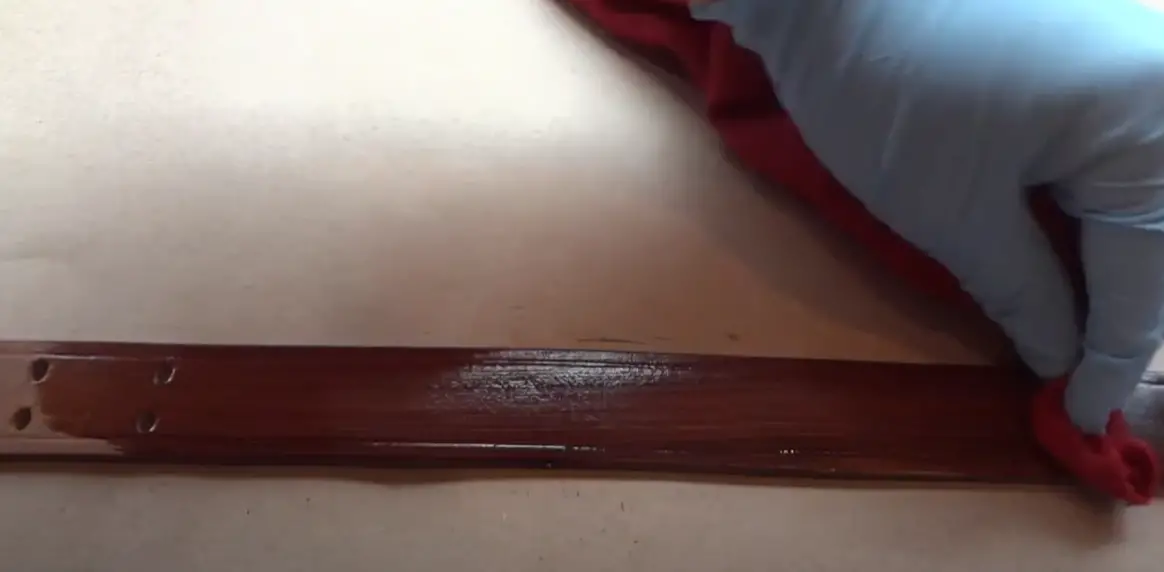
Step 1: Prepare the leather
Before you start dyeing leather with Rit dye, it’s important to make sure that the surface is clean and free of any dirt or oils. This will ensure that the color takes hold evenly and more effectively. To do this, use a soft cloth and warm soapy water to wipe down the leather surface. Once it’s dry, apply a thin layer of leather conditioner, and then allow it to dry completely.[2]
Step 2: Moisten the leather
Once the leather is clean and dry, you’ll need to moisten it prior to dyeing. This will help the dye absorb evenly into the surface of the leather. To do this, mix half a cup of warm water with two teaspoons of white vinegar in a bowl. Using a soft cloth, dab the mixture onto the entire surface of the leather item. Allow it to sit for a few minutes before proceeding.[2]
Step 3: Mix the dye
Now it’s time to mix the RIT dye. Follow the instructions on the package for creating a dye bath, then submerge your leather item into it. Make sure that you stir periodically, and keep an eye on the color as it develops. Depending on how dark or light you want the color to be, you may need to allow it to sit.[2]
Step 4: Apply Rit dye
If you want to apply the dye directly onto the leather, use a small foam brush. This will help keep your lines clean and even. Dip the brush in the dye solution and carefully stroke outward from the center of the item. Cover all areas evenly with an even coat of color.[2]
Step 5: Let the dye set
Once you’ve finished applying the RIT dye, it’s important to let it set and dry. Allow your leather item to sit for at least 24 hours before handling it or using it. Once the dye has fully cured, apply a thin layer of leather conditioner (optional) and you’re all done![2]
Step 6: Seal the leather
To ensure that the color doesn’t fade or rub off, it’s a good idea to seal the leather with a weatherproof spray. This will help protect the dye and also give your leather item a nice shine. Be sure to follow all instructions on the package for best results.[2]
Dyeing Leather With Coffee
Coffee is one of the oldest dyeing techniques that have been used to color and darken leather for centuries, and it can be a great alternative to RIT dye. It’s easy to do at home, all you need is some strong coffee or espresso, a brush, and some water. Be sure to use quality ingredients so that your results are long-lasting.

To use coffee as a dye for leather, start by creating a strong cup of coffee. Steep the grounds in hot water for several minutes until the color is dark and saturated. Once it cools, you can begin to brush the wet and concentrated coffee onto your leather item. Allow it to sit for several hours or overnight in order to fully absorb the color.
Once the is finished absorbing, you can use a damp sponge to wipe away any excess coffee from the surface. Finish by using a leather conditioner to nourish and protect the material. With this technique, you should be able to achieve a beautiful darkening effect on your leather item![1]
Dye Leather With Kool-Aid
If you’re looking for an alternative to RIT dye, then Kool-Aid is a great option! Kool-Aid contains food coloring that can be used to change the color of leather without any harsh chemicals. While this method may not produce long-lasting results, it’s much more economical and easy to use.
Here’s how you can dye leather with Kool-Aid:
-
- First, prepare the surface by wiping it down with a damp cloth to remove any dirt and debris.
- Create your dye solution – mix a packet of Kool-Aid with one cup of warm water until all the powder is dissolved.
- Apply the dye to the leather using a damp sponge. Work from the center outwards for even coverage. You may need to repeat this step if you want a darker color.
- Once your desired color is achieved, allow the leather to dry completely before touching it again.
- To protect the dye job and make it last longer, finish off with a coat of leather sealer or protector.
Using this method, you can easily and inexpensively change the color of your leather items. Keep in mind that Kool-Aid dye is not as permanent or long lasting as RIT dye, so it may need to be reapplied periodically.[1]
Leather Dye vs Acrylic Paint
When it comes to dyeing leather, most people think of RIT dye first. But is this the right choice? The answer depends on what you want to achieve and how long you plan to use the item. If your goal is a vibrant color that will last for years, acrylic paint may be a better option than RIT dye.
Acrylic paint is a type of synthetic plastic polymer, which makes it very durable. It can be used on leather for both indoor and outdoor applications. This means that the color will remain intact through rain, sun exposure, and general wear and tear. Additionally, acrylic paints come in a variety of colors so you can find an exact shade to match your desired look.[1]
Dye Leather With Hair Dye
If you’re looking for a more permanent solution to dye leather than RIT Dye, you can use hair dye. Just like when dyeing fabric, it’s important to test out the colors before using them on your leather. Hair dyes come in many shades and tones, so it’s important to pick the right one for your project.
For best results, always use a leather-friendly dye on your leather. Many hair dyes contain chemicals that can damage leather, so make sure to check the ingredients before purchasing.
When using hair dye on leather, it’s important to pre-treat the leather with a conditioner or sealant first. This will help protect the leather and ensure even coloring.[1]
Leather Dye vs Wood Stain
When it comes to dyeing leather, many people mistakenly believe that RIT Dye is the same as wood stain. While both products are used to color porous surfaces, they work differently and require different techniques and materials for successful results.
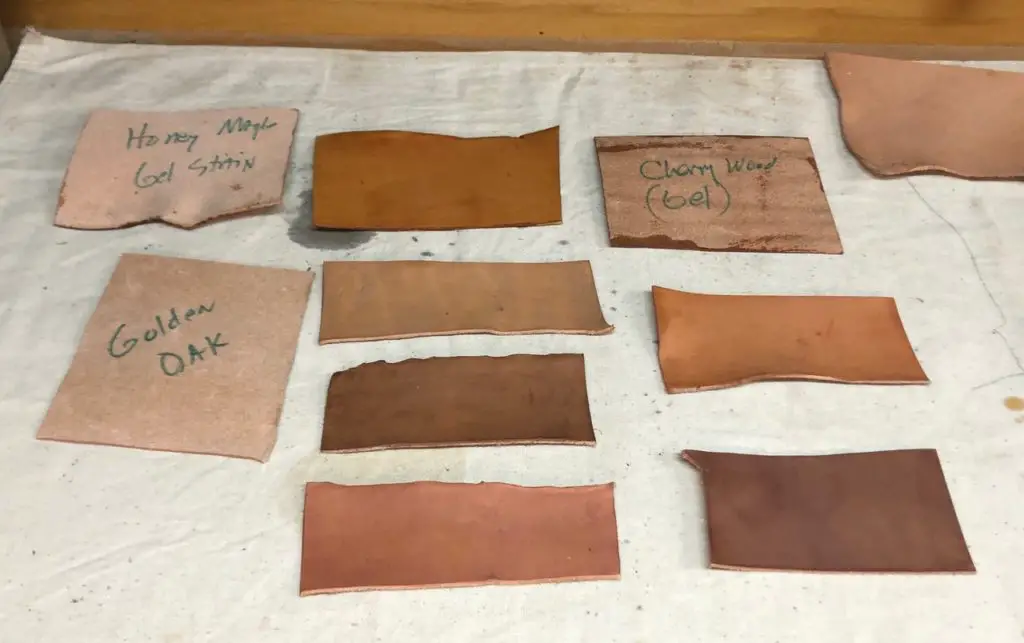
RIT Dye is a concentrated, fiber-reactive dye specifically designed to penetrate fabric fibers. It can be mixed with water and used directly on most natural fabrics, such as cotton, linen, wool, silk and leather. It’s important to note that leather must be prepared before dyeing with RIT Dye. The surface needs to be clean and free of any oils or waxes. Otherwise, the dye won’t penetrate the fibers properly.[1]
Dye Leather With Tea
Leather is one of the most durable materials used in clothing and furniture, but its color can fade over time. If you’re looking for a way to renew your leather items, dyeing it may be an option. While RIT Dye is a popular choice for fabric dyeing projects, does it work on leather?
The answer is yes! You can use RIT Dye to change the color of leather, although you may need a few more supplies than you would for fabric.
The first step is understanding that dyeing leather requires additional preparation compared to fabric. To start, clean and condition the leather with a product like mink oil or Lexol before starting your project. This will ensure that the dye will adhere to the leather properly.
Next, mix one cup of brewed tea with your RIT Dye in a large bowl or container. The tannins in the tea will help the dye penetrate and bind to the leather better. Stir the mixture thoroughly until all of the dye is dissolved before applying it to your leather item.
You can use a brush or sponge to apply the dye to the leather, making sure to do it slowly and in small sections. This allows you to control where the dye goes and helps avoid any splotching. Allow each section to dry completely before continuing on with another section.[1]
Dyeing Leather With Food Coloring
Leather can be dyed using food coloring in the same manner as fabric dye. However, there are some important things to keep in mind before starting this project.
The most important factor to consider when deciding whether or not to dye leather with food coloring is the type of leather you’re working with. Food dye is not recommended for use on suede or nubuck leather. While it may work on these materials, the effect is likely to be inconsistent and/or unpredictable.
If you plan to dye leather with food coloring, it’s also important that you line your workspace with newspapers or tarp so that any spills don’t ruin furniture or floors. You will also need a few other supplies such as gloves, a paintbrush, and a container for mixing the dye.[1]
Leather Dye vs Shoe Polish
When it comes to changing the color of leather, there are two main options: dye and shoe polish. It is important to understand the difference between these two options in order to properly answer the question “Does RIT dye work on leather?”
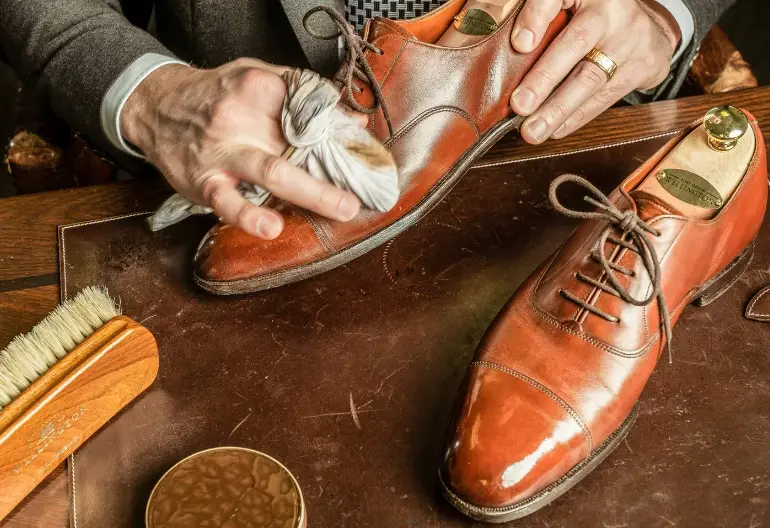
Shoe polish is essentially a coating that is applied over top of the existing surface of your leather goods. It does not penetrate into the material and so it is only able to provide a surface-level hue that can wear off with time. This means that shoe polish can offer you a temporary solution for color changing, but it may require frequent applications in order to maintain the desired color.
Leather dye, on the other hand, penetrates into the material and bonds with its fibers. This provides a more permanent solution for color changing that is more resistant to wear and less likely to require frequent applications.[1]
FAQ
What dye can I use on leather?
RIT Dye is designed to work on natural fabrics like cotton, linen and wool, but it can also be used on some leather items. However, because all leathers are different and have varying levels of porosity, it’s important to first test the dye in an inconspicuous area before applying it over the entire surface. RIT Dye also has special instructions for dyeing leather which you can find on their website.
Can you dye leather with black Rit dye?
Yes, you can dye leather with black RIT Dye. However, it is important to note that the color and texture of the leather may change slightly with the dye, so it’s best to test a small area before applying the dye over the entire surface.
What is the best type of dye for leather?
The best type of dye for leather is a water-based aniline dye. Aniline dyes are specifically designed to penetrate the surface of the leather and provide long-lasting color. However, these dyes can be difficult to work with, so it’s best to have a professional do the work for you.
Does dye stick to leather?
Yes, dye can stick to leather if it is applied correctly. The key is making sure the leather is clean and dry before applying the dye, and that you use a water-based aniline dye specifically designed for leather. It’s also important to remember that all leathers are different, so it’s best to test a small area first before applying the dye over the entire surface.
Is leather hard to dye?
No, leather is not hard to dye if you use the correct type of dye. As mentioned above, an aniline dye is best for leather. However, because all leathers are different and have varying levels of porosity, it’s important to test the dye in an inconspicuous area before applying it over the entire surface.
Does leather dye last?
Yes, properly applied leather dye can last for a long time. The key is using a water-based aniline dye specifically designed for leather and following the instructions carefully. It’s also important to remember that all leathers are different and have varying levels of porosity, so it’s best to test the dye in an inconspicuous area.
Do you dye leather wet or dry?
It is best to dye leather when it is dry. Before applying the dye, make sure the leather is clean and free of dirt or oils. Once the leather is completely dry, you can apply the aniline dye according to the manufacturer’s instructions. It’s also important to remember that all leathers are different and have varying levels of porosity, so it’s best to test the dye in an inconspicuous area.
Will fabric dye dye leather?
Yes, fabric dye can be used to dye leather. However, it is important to remember that all leathers are different and have varying levels of porosity, so it’s best to test the dye in an inconspicuous area before applying it over the entire surface. RIT Dye has special instructions for dyeing leather which you can find on their website.
Useful Video: Dyeing Leather With Rit Dye – Sharp Works
Conclusion
RIT dye is an effective and easy-to-use method for dying leather. It’s a great way to save money, as you can buy the dye in bulk, and it can be used on a variety of different types of leather materials. Before starting any project, however, make sure to do some research first so that you know how best to prepare the leather and apply the dye for optimal results.
Lastly, consider using a protective finish, such as waterproofing spray or lacquer, to help protect the dyed material from fading or discoloration over time.
With these tips in mind, you’ll be able to confidently and successfully use RIT dye on your leather projects!
Happy crafting!
References
- https://leatherinsights.com/rit-dye-on-leather/
- https://sewingiscool.com/what-can-you-dye-leather-with-rit-coffee-paint-stain/





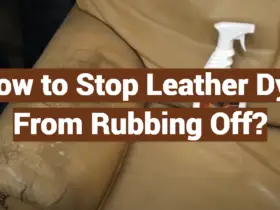

Leave a Reply